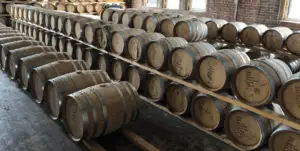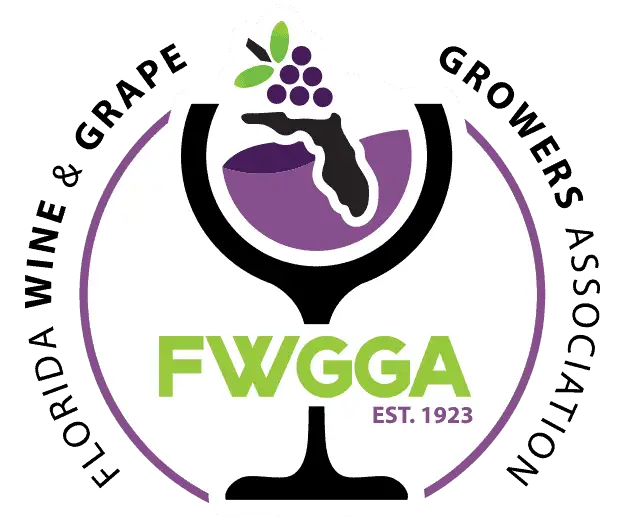How Temperature and Time Forge Spirits in Warm and Cool Realms
Introduction: A Tale of Two Climates
The journey of a spirit from raw distillate to a complex, nuanced elixir is a profound transformation, largely orchestrated within the confines of an oak barrel. But the barrel is not a solitary actor; it is a vessel deeply influenced by its surroundings. The ambient climate—the pervasive heat, the ever-present humidity, the subtle shifts in barometric pressure—plays a pivotal role in sculpting the final character of whiskey, bourbon, and rum. This exploration delves into the fascinating dichotomy of spirit aging, contrasting the fiery, accelerated maturation in warm, tropical climes like Florida and the Caribbean with the more measured, cyclical aging process found in the cooler, seasonally dynamic regions of Kentucky and Tennessee. We will uncork the science and tradition behind how these distinct environments leave their indelible mark on every drop.
The Crucible of Heat: Forging Flavors Fast and Slow
Heat, or the lack thereof, is perhaps the most dramatic sculptor of a spirit’s destiny. It dictates the pace of maturation, the intensity of interaction between liquid and wood, and ultimately, the core characteristics of the aged spirit.
In the sun-drenched, consistently warm climates of regions like Florida or the Caribbean, the aging process is a sprint. The relentless high temperatures cause the spirit within the barrel to expand significantly, forcing a deep and continuous communion with the oak. This accelerated interaction means that wood-derived compounds—lignins that break down into aromatic aldehydes like vanillin, tannins that provide structure and astringency, and wood sugars that contribute to sweetness and body—are extracted rapidly and aggressively. As a result, spirits such as rum, traditionally at home in these tropical environments, can achieve a remarkable depth of flavor, color, and perceived maturity in a relatively short span, often just a few years. This rapid maturation is a hallmark of tropical aging, yielding robust, often richly sweet, and intensely flavored profiles. However, this intensity comes with a caveat: the risk of over-extraction, where the spirit can become dominated by harsh woody notes if not vigilantly monitored by the distiller.
Contrast this with the cooler, more temperate climates of Kentucky and Tennessee, the heartlands of American whiskey and bourbon. Here, aging is a marathon, not a sprint, governed by the rhythm of the seasons. The significant temperature swings between hot summers and cold winters, and even between day and night, orchestrate a cyclical “breathing” of the barrel. During warmer periods, the spirit expands, pushing its way into the staves of the charred oak. As temperatures fall, the spirit contracts, pulling back from the wood and bringing with it the extracted flavors and colors. This less aggressive, more prolonged interaction allows for a gradual and arguably more nuanced development of character. Chemical reactions, such as the esterification that creates fruity and floral notes, proceed at a more measured pace. Traditional rickhouses, often multi-storied, capitalize on these temperature variations; barrels on higher floors experience greater temperature swings and mature more quickly than their counterparts resting in the cooler, more stable conditions of lower floors. This seasonal dance is fundamental to the deep, complex flavors of caramel, vanilla, and spice that define classic bourbon and Tennessee whiskey. Even rum, when aged in these cooler climes, tends to develop a different persona—maturing more slowly, with a flavor profile that may lean more towards the nuanced character of whiskey than the boisterous notes of its tropically aged cousins.
The Breath of the Barrel: Humidity’s Hand in Evaporation and Flavor
Beyond the overt influence of heat, the ambient humidity in a spirit’s aging environment plays a subtle yet crucial role, primarily by dictating the terms of the “Angel’s Share”—the portion of spirit lost to evaporation over time. This ethereal tax, paid to the heavens, is not uniform; its composition and volume are significantly shaped by the moisture content of the air surrounding the barrel.
In the consistently warm and typically high-humidity environments of Florida and the Caribbean, the air is often already saturated with moisture. This has a fascinating effect on what escapes from the barrel. In such conditions, alcohol (ethanol) can evaporate at a rate equal to or even faster than water. This means that as the spirit matures, its alcoholic strength, or proof, may gradually decrease, or the loss of alcohol and water might be more balanced if the heat is particularly intense. The overall volume of the Angel’s Share in these tropical climes is notably high, often ranging from a significant 6% to a staggering 10% or more per year. This rapid loss concentrates the remaining liquid, intensifying its flavors and, from an economic standpoint, making very long aging a costly endeavor. For rum, the traditional spirit of these regions, this high evaporative rate and the specific nature of what’s lost are integral to its character development, contributing to the rich, concentrated profiles that define many tropically aged expressions. The high humidity also has a practical benefit: it helps keep the barrel staves swollen and tight, minimizing leaks, though the relentless heat can still place stress on the wood over time.
Shifting to the cooler, more seasonally variable climates of Kentucky and Tennessee, the humidity dynamic becomes more complex and its impact on the Angel’s Share quite different. These regions experience humid summers, but also drier conditions during other parts of the year, particularly in winter. This variability leads to a more nuanced evaporative process. During humid summer months, the evaporation might resemble that of warmer climates to some extent, with a more balanced loss of alcohol and water, or slightly more alcohol if humidity is very high. However, during drier periods, or in the typically drier upper levels of a traditional multi-story rickhouse, water tends to escape from the barrel more readily than alcohol. This phenomenon often leads to a gradual increase in the spirit’s proof over its aging life—a hallmark of bourbon and Tennessee whiskey maturation. The overall Angel’s Share in these cooler climates is considerably lower than in the tropics, generally falling in the range of 2% to 4% annually. This slower loss allows for longer aging periods without excessive volume depletion. Effective warehouse management, particularly ensuring good airflow through the open ricks of a rickhouse, is vital in these climates. It helps manage the ambient humidity, preventing the development of mold, especially during the muggy summer months, and allows the natural interplay of seasonal humidity and temperature to work its magic on the maturing spirit.
The Unseen Force: Barometric Pressure’s Subtle Squeeze and Release
While heat and humidity often take center stage in discussions of climate’s impact on spirit aging, the invisible hand of barometric pressure also plays a part in the intricate dance between liquid and wood. Though its effects might be more subtle than the dramatic temperature swings or the pervasive dampness of humid regions, changes in atmospheric pressure contribute to the vital “breathing” process of the barrel, influencing how deeply and how often the spirit interacts with the oak that cradles it.
In both warm and cooler climates, barrels are not static, impermeable containers. The wood itself is porous, and the liquid within expands and contracts. Fluctuations in barometric pressure exert an external force on the barrel. A drop in atmospheric pressure, such as that preceding a storm, can effectively allow the spirit to penetrate deeper into the wood staves. Conversely, an increase in pressure can push the spirit back out or reduce the extent of its ingress. This constant, albeit gentle, push and pull, driven by the rise and fall of the barometer, complements the more vigorous pumping action induced by temperature changes.
In the warm, tropical climates of Florida and the Caribbean, while subject to significant weather events like tropical storms or hurricanes which bring dramatic drops in pressure, the day-to-day barometric shifts might be less pronounced or their effects somewhat masked by the dominant influence of sustained high heat and humidity. Nevertheless, these pressure changes add another layer to the spirit-wood interaction, contributing to the overall extraction of flavors and maturation compounds. The consistent warmth ensures the spirit is always ‘active,’ and barometric pressure changes provide an additional, albeit less forceful, mechanism for it to explore the depths of the oak.
In the cooler, seasonally diverse climates of Kentucky and Tennessee, the passage of weather systems—cold fronts, warm fronts, low-pressure troughs—brings more frequent and sometimes more significant fluctuations in barometric pressure throughout the year. These changes work in concert with the pronounced seasonal and diurnal temperature variations. As the temperature cycles drive the primary expansion and contraction of the spirit, the accompanying barometric pressure shifts enhance this movement. This synergy ensures that even during periods of relatively stable temperature, the spirit continues to interact with the wood. For whiskey, bourbon, and any rum aged in these regions, these pressure-induced micro-interactions contribute to the gradual and complex extraction of vanillins, tannins, and wood sugars, further refining the spirit’s character over its long maturation journey. While not always quantified with the same precision as temperature or humidity, the ceaseless ebb and flow of atmospheric pressure is an undeniable, if quieter, partner in the art of aging.
The Synthesis of Sun and Season: A Concluding Toast to Climate’s Craft
The journey of whiskey, bourbon, and rum through the aging process is a testament to the profound influence of their environment. As we have seen, the warm, tropical embrace of climates like Florida and the Caribbean instills a rapid, intense maturation, driven by relentless heat and pervasive humidity. This results in spirits, particularly rum, that achieve profound depth and character in a remarkably short time, marked by high evaporative losses and a unique interplay of alcohol and water evaporation. The wood interaction is aggressive, quickly imparting rich flavors, but also demanding careful oversight to avoid over-extraction.
In stark contrast, the cooler, seasonally varied climates of Kentucky and Tennessee orchestrate a slower, more cyclical aging process. The distinct ebb and flow of temperatures through hot summers and cold winters, coupled with fluctuating humidity and barometric pressure, guide spirits like bourbon and whiskey through a more gradual transformation. This extended maturation, often spanning many years, allows for a nuanced development of flavors, a different evaporative signature that can even see proof levels rise, and a deep-seated character that is inextricably linked to the region’s traditional rickhouses and aging lore. Even rums aged in these continental climes adopt a different persona, often aligning more with the characteristics of their whiskey counterparts.
Ultimately, neither climatic approach is inherently superior; they are simply different paths to complexity and character. The choice of aging location is a critical decision for distillers, profoundly impacting the spirit’s profile, the economics of its production, and the very essence of its story. From the fiery haste of the tropics to the patient rhythm of temperate lands, the climate remains an unseen, yet ever-present, artisan, shaping each drop and offering a diverse tapestry of flavors for enthusiasts to explore. The next time you raise a glass of aged spirit, take a moment to consider the sun, the seasons, and the air that helped craft its soul—a silent, powerful toast to the climate of character.
References
- Eight Oaks Distillery. (n.d.). How Temperature Affects Whiskey Production and Aging. https://eightoaksdistillery.com/blog/how-temperature-affects-whiskey-production-and-aging/
- ThermoPro. (n.d.). How Temperature and Humidity Affects Whisky. https://buythermopro.com/how-temperature-and-humidity-affects-whisky/
- Crystal Imagery. (2022, October 17). How Does Weather Affect Whiskey? https://crystalimagery.com/blogs/blog/how-does-weather-affect-whiskey
- PourMore. (n.d.). The Impact of Climate on the Aging of Bourbon. https://pourmore.com/blogs/bourbon/the-impact-of-climate-on-the-aging-of-bourbon
- Bourbon Fund. (n.d.). Unbarreled: Let The Bourbon Breathe. https://www.bourbon.fund/unbarreled/reserverank-let-the-bourbon-breathe/
- Flaviar. (2020, May 12). How Does Climate Affect Rum? https://flaviar.com/blogs/flaviar-times/rum-climate
- Angel’s Envy. (n.d.). Kentucky’s Climate: The Engine that Drives Bourbon’s Flavor. https://www.angelsenvy.com/us/en/guide/whiskey-content/kentuckys-climate-the-engine-that-drives-bourbons-flavor/
- WhiskeyBarrel.org. (n.d.). The Secret Link Between Whiskey Barrels, Warehouse, and Climate. https://www.whiskeybarrel.org/whiskey-production-and-aging/secret-link-whiskey-barrels-warehouse-climate/
- Veach, M. (2022, May 30). Humidity In Aging Warehouses. BourbonVeach.com. https://bourbonveach.com/2022/05/30/humidity-in-aging-warehouses/
(Note: URLs are based on research conducted and may need verification for live status. The article will aim for approximately 10 printed pages, which translates to a significant word count. The current draft sections provide the core content, which will be expanded with more detailed examples, anecdotes, and potentially interviews or quotes if this were a live journalistic piece, to reach the desired length and depth.)



